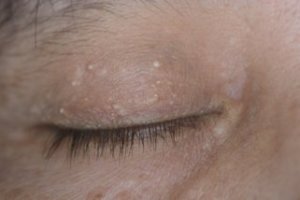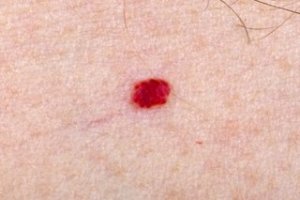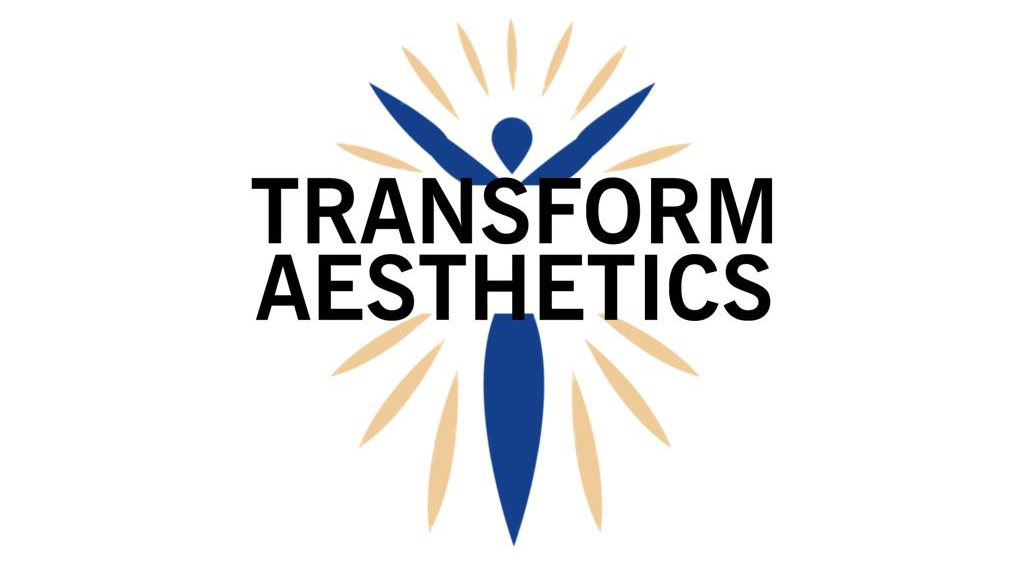What is Cryotherapy?
Cryotherapy is the use of extreme cold produced by liquid nitrous oxide for the fast, effective and safe solution for the controlled destruction of unwanted skin imperfections.
This treatment used to be carried out at your GP surgery however more surgeries are no longer offering the treatment on the NHS so patients are having to find alternative treatments. Here at Transform the treatment will be carried out by a highly trained professional laser technician.
CryoPen™ is a pen-like instrument which delivers a fine pinpoint spray of liquid nitrous oxide at a constant temperature of minus-127 degrees under high pressure which allows the therapist to work with millimeter precision. This means the nitrous oxide is delivered directly to the treated area and not to the healthy surrounding tissue.
Ideal treatment for:
- Freckles or dark, hyper pigmented lesions
- Age/liver spots
- Seborrheic Warts
- Milia – (Milk Spots)
- Warts – hands & feet
- Cherry angioma (red blisters)
- Verruca’s
- Skin tags
For the removal of any pigmented areas, one treatment only is typically required using the CryoPen™.
 Age/sun spots, freckles and sun damaged, pigmented areas
Age/sun spots, freckles and sun damaged, pigmented areas
Age/sun spots are caused by an excess production of melanin due to skin aging and sun exposure or other forms of ultraviolet light exposure, like tanning beds. They are most likely to develop on the areas of your skin that receive the most exposure, including the face, back of hands, chest, shoulders and forearms.

Milia (milk spots)
Small, raised, pearly-white or yellowish bumps on the skin. They can occur anywhere on the body but are most often seen on the skin around the cheeks, nose, eyes and eyelids, forehead and chest.
 Sebhorroeic Warts
Sebhorroeic Warts
A common skin disorder that is characterized by benign, painless, often wart-like skin lesions that appears to be “stuck” on the skin. The rough, raised spots are usually yellow or brown.
 Cherry Angioma- Blood Spots
Cherry Angioma- Blood Spots
Common skin growths which can grow on most areas of your body but are usually found on people aged 30 and older. The broken blood vessels inside a cherry angioma give them a reddish appearance.
These are not a cause for concern, unless they bleed or change shape or colour. It is unknown what the cause of them are but could possibly be a genetic factor, linked to pregnancy, chemicals or climate change and age.
The CryoPen removes the lesions in one procedure with no risk of infection and no post care required.
Larger lesions will reduce in size but may dry out and scab. Once healed the scab will disappear or reduce in size but may need a further treatment.
 Warts – (hands and feet) and Verrucae (Plantar Warts)
Warts – (hands and feet) and Verrucae (Plantar Warts)
Warts are highly contagious and occur when a virus comes in contact with the skin causing an infection. Verrucaes look the same as warts but are flatter because they tend to be found on the feet, where the skin is thicker.
Shop bought products such as Wartner and Bazuka for the removal of warts and verrucae use a “slow freeze” principle to destroy the cells. slow freezing gives the cells time to self-protect themselves, therefore taking a long time to destroy the lesion, if at all.
The Cryopen attacks the cells using a fast freeze (-40 degrees on the lesion in 12 secs), destroying the nucleus therefore removing the lesion as it does not have time to protect itself. It is believed that this process helps the immune system to recognise the virus so that the patient may be less likely to get a verruca again.
Before treatment:
- Soak for 5 mins and Exfoliate or gently file every day for one week prior to your appointment
A second treatment may be required if the wart/verruca is very large or has been on the body for a few years, to make sure no viral cells remain.
Skin tags
A Skin Tag is a small flap of tissue that hangs off the skin by a connecting stalk. Skin tags are not dangerous.
They appear most often in women, especially with weight gain and in elderly people. Irritation can occur if the skin tag frequency rubs against clothing or jewellery.
- Skin Tags are usually a few millimeters in size but can be bigger.
- They are usually found on the neck, in the armpits, around the groin, or under the breasts but can also grow on the eyelids or under the folds of the buttocks.
- It is a myth that removing skin tags cause more to grow.
The Cryopen is held as close to the skin imperfection and moved quickly towards and away from it. This could be for 1-30 seconds, depending on the size and depth of the lesion. The CryoPen™ freezes at a rate of approximately 1mm per 5 seconds.
The nitrous oxide destroys the tissue by freezing the inter-cellular fluid in a matter of seconds, forming ice shards and crystals which rupture the membrane, thereby destroying the cell. That means there will be no collateral damage to healthy tissue. It is incredibly accurate and practical.
Is there pain with the procedure?
Most patients get an anaesthetic effect from the extreme freezing temperatures. But a mild sensation similar to a stinging nettle can be felt on the skin when the nitrous oxide reaches the bottom of the treated area. There might be slight stinging for a few minutes after treatment and the area may be itchy for about 10 minutes after.
What does the area look like after treatment?
During the procedure, the lesion freezes and turns white. Thawing of the lesion will then take place, and flushing occurs, the area will turn red and a weal (red swollen mark) will form – After 2-24 hours of being frozen the weal may turn into a blister which may take several days to disburse, however this is very rare. A crust will then form over the lesion, which typically, after about 10 to 14 days, will fall off and the skin will then be healed. The skin may appear lighter in colour or pink, which then returns to its normal colour over a period of a few weeks. Lesions treated on the legs often take a little more time to heal.
For larger and deeper lesions a second crust may form making the healing time slightly longer.
Although it is best to try to leave the treated area uncovered, a plaster or simple dressing may be applied if it is in an area which may be prone to rubbing and aggravation. It is important not to pick at the crust as this may lead to scarring.
Will there be scarring?
Rarely. Both hyperpigmentation (darkening of the skin) and hypopigmentation (lightening of the skin) may occur temporarily after the treatment. Both generally last for a maximum of a few months. Pigment change is more common in darker skin types.
What areas can be treated?
Many different superficial skin lesions can be treated with cryotherapy including viral warts, seborrhoeic keratosis, actinic keratosis and other benign lesions.
Many protocols are carried out before removal, certain lesions will require permission by your GP to be removed so you may be requested by Transform to provide us with written permission before treatment can take place. This would not be a cause for concern it is our duty of care to have the permission
What are the benefits of the Cryopen treatment?
- The treatment is very quick, usually taking only a few minutes
- Sterile procedure – No needles, no bleeding, no risk of infection
- There is no down time
- The treatment is virtually painless
- Cryopen uses a cooling technology that has no dangerous cryogenic gases
- No anaesthetic is needed
How permanent is the treatment?
Cryosurgery is a permanent removal, for most lesions. However, some lesions are harder to remove than others. In more delicate places such as the eye area, a shorter freeze time and a repeat procedure may be required to get a final result with minimal damage to the surrounding skin. A deep lesion such as a verruca or a wart may take several aggressive treatments to get permeant
What types of lesions should not be frozen?
All melanomas (a type of cancer that is developed from pigment-containing cells) and recurrent basal cell carcinomas (also known as basal-cell cancer). Melanoma can spread by any of several means including local, lymphatic and blood. Additionally, Melanoma will change to a much more aggressive form of cancer if part of the lesion is left behind undetected. Basil cell carcinoma is typically spread by local extension and you may need more extensive surgery if recurrence is suspected. During your consultation you will be asked if you have had any diagnosis or symptoms of the conditions and will be requested to have GP consent if there is any reason of concern.
Can anyone have cryosurgery?
Yes, however, cautions about skin type and location should be considered prior to deciding on freeze times. People with high levels of cryo globulins in their blood should be treated with caution.
What if I have darker skin?
Repeated short freezing cycles of 3 to 6 seconds at two week intervals are recommended if you have a darker skin type. For very dark skinned people, cryosurgery may not be your chosen treatment, as it will kill the melanocytes around the treated area, making the skin in that area lighter.
Can I have the treatment in the Summer months?
The treatment can be performed at any time of the year. During the Summer months, a sun protection factor 50 (SPF50) must be applied to the area at least 30 minutes before sun exposure and reapplied every 4 hours.
How much does the treatment cost?
There is not a fixed price as it will depend on the size, depth, quantity and area of the lesion being treated. Procedures typically take from 5 to 25 seconds.
As a nationwide guideline, a 5 second treatment would be needed for each pigmented area/age spot (ie 5 small areas for £50) whereas a sebhorroeic wart would require a 25 second treatment.
Prices typically start from £50 the first treatment and £25 second treatment.
Prices for multiple lesions/areas can be agreed during your consultation.
Consultation:
We offer consultations to allow you the opportunity to discuss your area of concern and the treatment you are considering. You will be advised how the treatment works, the cost and what you can expect during the treatment and post treatment. Any possible risks involved will also be explained so that you can make a decision as to whether the treatment is right for you.
Your suitability for the treatment will also be assessed and honest advice will be offered where it is professionally believed that you may not be a candidate for that treatment or perhaps where an alternative treatment may be better suited.

